Imagine if I told you that some of our most beloved characters like…
- Harry Potter casting spells in Hogwarts, 🧙♂️
- Frodo Baggins trekking through Middle Earth, and
- Luke Skywalker swinging his lightsaber…
They all play out the SAME “hero’s journey,” just in different cloaks (or, in Luke’s case, Jedi robes!) And here’s something even more mind blowing: What if I told you this pattern can even be found in the most popular heroes of ancient myths, like 🏛️ Hercules and Odysseus, reaching even to religious figures like Jesus and Buddha?
Joseph Campbell spent his entire life studying myths from across the world, and he came to believe there was a single, universal ‘monomyth’ underneath all of the most powerful narratives that he called the “Hero’s Journey.” ⚔️ The same pattern shows up in stories over and over again because it must resonate with something very deep inside us, our common humanity regardless of our culture.
“The Power of Myth” also provides a compelling counter-argument to popular atheist voices, who often mock religion as being foolish or childish. Joseph Campbell demonstrates there is invaluable wisdom 🗝️ hidden within the world’s myths and religions, even if they may not at first appear to make rational sense.
Myths have the power to:
- 🧭 Guide our life’s direction and purpose in a meaningful way,
- ⛪ Structure the shared life in our communities or tribes, and they may even
- ❤️ Open our hearts to the Great Mystery of the universe—those parts of reality that cannot be grasped with our intellect or physical senses.
… okay, I know this is getting a little too mystical for some of us, but let’s remember what one British geneticist said:
Not only is the universe stranger than we suppose, it is stranger than we CAN suppose.
J.B.S. Haldane (paraphrased)
Who was Joseph Campbell?
Joseph Campbell was an influential professor and writer, who spent decades studying the world’s myths and religions. In 1949, he wrote “The Hero with a Thousand faces,” 🎭 a groundbreaking book that explained his idea of the “hero’s journey.” It profoundly influenced George Lucas while making Star Wars. Joseph Campbell’s popularity increased dramatically after a 1988 television interview series on “The Power of Myth,” featuring a series of enlightening conversations between him and journalist Bill Moyers, and that was later adapted into this book.
1. The Hero’s Journey: The greatest myths tell a story of courage, sacrifice, and transformation
Let’s begin with Joseph Campbell’s most important idea of the “hero’s journey.” As we said, this is a pattern that can be found underneath many of the world’s most powerful stories and myths, a kind of ‘monomyth.’ And once you understand this pattern, then you’ll begin seeing it everywhere, which is why so many people say Joseph Campbell changed how they saw the world.
What is the Hero’s Journey? Here is a highly simplified explanation. You can imagine it like a circle:
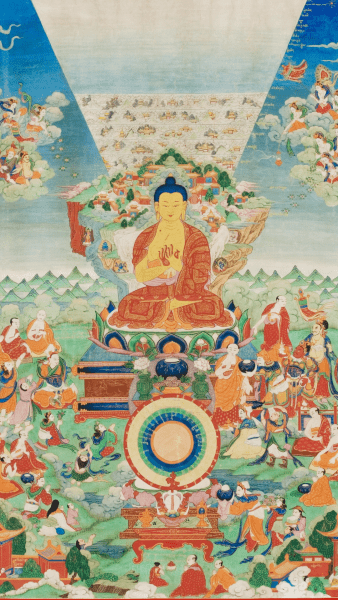
- The call to adventure. 🌍 In the beginning, the main character is living their ordinary life. This is Harry Potter living under the stairs, Frodo enjoying the innocent life of the Shire, Luke Skywalker being a simple farmer. But suddenly they are called to go on a journey into another, extraordinary world.
- Trials and tribulations. 🗡️ On that journey, our hero will slay monsters and meet wise old mentors. Harry meets Dumbledore, Frodo meets Gandalf, Luke meets Obi Wan… are you staring to see the pattern? They’re all the same character in a way, providing guidance and wisdom to our main hero.
- The transformation. 🦋 To succeed in their journey, our hero must overcome challenges, both outer and inner. They must enter dark caves and face their greatest fears. This includes Voldemort, Sauron, and Darth Vader. As a result, they experience personal growth or change.
- The return. 🔄 Our hero returns to the ordinary world, but they bring back something of value to their old community—sometimes it’s a literal treasure, but often it’s more abstract knowledge of transformations, which they share to benefit the whole community.
Why do stories that follow the pattern of the “hero’s journey” resonate so deeply with us, no matter our culture, age, or background?
Because it applies to our own lives, too. These stories show us a positive pattern by which we can live, to have a life of greater meaning and fulfillment. We leave our zone of comfort to find something of value or learn something new, then bring it back for others in our community to benefit also.
Fairy tales are more than true: not because they tell us that dragons exist, but because they tell us that dragons can be beaten.
G.K. Chesterton, paraphrased by Neil Gaiman
That is how human society has always progressed, mastering countless technologies from 🔥 fire to agriculture to electricity… through courageous exploration of the unknown, following the pattern of the “hero’s journey.”
The “hero’s journey” is a common pattern the lies beneath many of the greatest myths and stories. The hero is called to adventure, suffers many trials and tests, becomes transformed, then returns to his original world bringing something of value—a treasure or wisdom. This spirit of courageous encounter reveals to us the most meaningful way to live.
2. The Religious Hero: The central figure in many faiths is on a hero’s journey
Joseph Campbell was raised a Catholic, but from an early age he became fascinated by myths from other cultures, first American Indian, then Hindu myths, and others. He was astonished to find many of the same themes and patterns everywhere, particularly the hero’s journey:
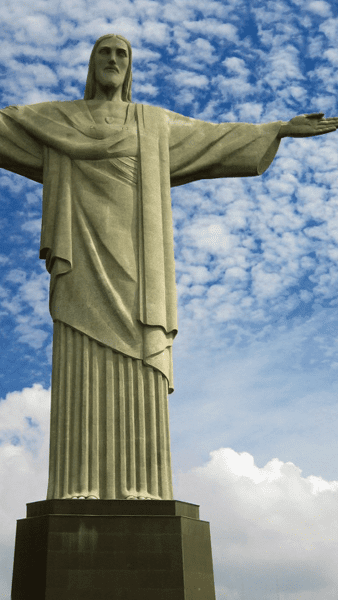
- Jesus ✝️ went on a hero’s journey, fasting 40 days in the desert and overcoming temptations from the devil, then he came back to teach his Gospel. (By the way, this idea will be shocking to many religious people. J.R.R. Tolkien and C.S. Lewis, the famous authors of The Lord of the Rings and The Chronicles of Narnia, were both Christians who had reflected deeply on their faith. They had concluded Jesus’s story was a “true myth,” meaning it follows common patterns of powerful myths while at the same time being historically true.)
- Buddha ☸️ also went on a journey, sitting beneath a tree, conquering his own mind with all its fears and desires. At last, he reached a state of inner enlightenment, and returned to share his teaching to help all beings escape suffering. To learn the fundamentals of Buddhist, take a look at our summary of “The Heart of the Buddha’s Teaching” by Thich Nhat Hanh.)
- Shamans 🌳 in native cultures generally begin their ‘career’ by going on a difficult spiritual journey. That can be interpreted as a hero’s journey into a different world, because the shaman often has mystical dreams or visions, which put them in touch with deeper, universal truths. After this transformation, the shaman returns to serve their community as the mediator between the human world and the divine or spiritual world.
For some extra context, it was the great psychologist Carl Jung who first proposed the idea there are universal ‘archetypes’ that can be found in myths and legends across all cultures. An archetype being like a pattern or image that is common because it rises up from the “collective unconscious” that all humans share. (And if you don’t get all that, don’t worry! Very smart people are still trying to figure it all out!) In his last book Man and His Symbols, here’s what Carl Jung wrote about the hero in religions:
“The universal hero myth, for example, always refers to a powerful man or god-man who vanquishes evil in the form of dragons, serpents, monsters, demons, and so on, and who liberates his people from destruction and death. The narration or ritual repetition of sacred texts and ceremonies, and the worship of such a figure with dances, music, hymns, prayers, and sacrifices, grip the audience with numinous emotions (as if with magic spells) and exalt the individual to an identification with the hero.”
Read more in Man and His Symbols by Carl Jung
At the core of many religions is the a hero, someone who endures great suffering and experiences a transformation, which allows them to brings back a teaching to save humanity. Three examples of this are Jesus, Buddha, and Native American Shamans.
3. Follow Your Bliss: Rather than conforming to society, do what makes you come alive
Society conditions us to have certain aims in life, it says “you have to do this” or “… “you should be like that.” But when we follow those social expectations, then we often wind up feeling unfulfilled. That is why it’s so important to ask ourselves questions like “who am I really?” and “what do I really want?”
Joseph Campbell says to “follow your bliss.” This is probably his second most famous idea. Where did it come from? While studying Hindu philosophy, Campbell discovered the Sanskrit term “Sat-Chit-Ananda” which describes the ultimate reality and our true self:
- Sat means existence,
- Chit means consciousness, and
- Ananda means bliss.
…Campbell had no idea what those first two meant, existence or consciousness, but he understood bliss very well, so his life’s aim became seeking bliss and those experiences of feeling alive. He trusted following this path could lead him to the other two parts of ultimate realization.
Don’t ask what the world needs. Ask what makes you come alive, and go do it. Because what the world needs is people who have come alive.
Howard Thurman
5 actionable ways to follow your bliss:
- Sacrifice your self. 👨👩👧👦 The core principle of being a hero is sacrifice, sacrificing yourself or some part of yourself to something larger, whether it’s for an ideal or the greater good of others. Bliss is not the same thing as an easy life. There’s something deep inside of humanity that admires sacrifice, whether it’s the everyday sacrifice of a mother or father, or the more dramatic sacrifice of a soldier or firefighter.
The purpose of life is not to be happy. It is to be useful, to be honorable, to be compassionate, to have it make some difference that you have lived and lived well.
Ralph Waldo Emerson

- Visit sacred spaces. ⛪ One of Joseph Campbell’s favourite places to spend time is Chartres Cathedral in France, and he believes religious buildings like that are not just pretty to look at, but really “a landscape of the soul.” Observing Jesus on the cross, the paintings of Mary Mother of God and the other saints, perhaps providing a glimpse of another non-physical reality that may exist within us.
- Create a private place. 🎨 For yourself, set aside a special place and time in your home, which is reserved for introspection and creative incubation, free of the day’s news and social media. One of the best things to do here is to read great books, from authors that are a few steps ahead of you in life’s journey. Campbell says “your mind is brought onto that level” resulting in “a nice, mild, slow-burning rapture all the time.”
- Listen to your dreams. 🌙 Dreams are “private myths,” according to Joseph Campbell, often delivering to us messages of wisdom coded within symbolic language. But how can we decode those messages? By using free association—when you have a vivid dream, analyze the images of the dream, and explore what other memories or ideas they are connected to in your mind.
- Meditation and prayer. 🙏 Certain practices can help us get in touch with “that mystery,” often by focusing on one thing, whether it’s praying the Catholic Rosary or repeating the names of God in Sanskrit. Campbell says that when we are unified with “that mystery,” then ultimately we become aware of no forms—he seems to be approaching that Buddhist concept of non-duality, losing our sense of being separate from everything else.
You’ve probably heard of Alan Watts, a highly engaging speaker who brought many concepts from eastern philosophy to young western audiences around the 1960’s. In his book The Way of Zen, Watts describes the unique method of zen meditation as “sitting just to sit.” Rather than a rigid technique, Zen Buddhists allow everything to pass through them, cultivating an inner quality known as “non-graspingness.” And this presumably leads to an inner liberation from our self, also called our ego.
Alan Watts wrote, “It is fundamental to every school of Buddhism that there is no ego, no enduring entity which is the constant subject of our changing experiences. For the ego exists in an abstract sense alone, being an abstraction from memory, somewhat like the illusory circle of fire made by a whirling torch.”
Let’s reflect for a minute on Joseph Campbell’s own positions. While he sees deep value in many religious myths and rituals, he was not a believer himself. In his mid-20’s, he left the Catholic faith that he was brought up in.
He believed that what was needed was not a return to old ways, but the birth of new planet-wide myths that could unite all people on the globe. He sees the United States as a possible prototype for such a universal myth, with the founders of the country being united under Enlightenment principles like Reason (symbolized by the”Eye of Providence” which is shown on the pyramid on the back of the U.S. one-dollar bill).
We are raised with certain social expectations, but they may lead us to unhappiness. Instead, Campbell says to “follow your bliss” and do what makes you come alive. This doesn’t mean choosing the easy path, it usually involves self-sacrifice, inner reflection, reading great thinkers, meditation and prayer.
4. Becoming an Adult: Rituals helped people transition from childhood to adulthood to old age
Why do so many young adults today seem to be lacking a clear direction? Why are they often confused about what to do with their lives?
For thousands of years, myths and rituals guided people through life. Religious traditions developed to mark points of transition during our lives, which made it easier for a person to let go of childhood, find meaning in life, and accept aging with grace.
Here are some concrete examples:
- Initiation rituals. 📜 Many cultures have ceremonies that mark a transition between childhood and adulthood. In many Indigenous cultures or tribal society, initiation rituals commonly involve challenges that must be overcome, including fasting, physical pain, or wilderness survival.
A toned-down version of an initiation exists in ceremonies like the Catholic Confirmation or Jewish Bar Mitzvah. But they are slowly becoming less common in Western countries, as they become more secular. (Joseph Campbell didn’t like it when churches tried to be more modern and friendly, like using guitar music or stopping the use of Latin in Catholic Masses. He felt these changes threw away valuable mystical traditions.) - Hunting rituals. 🏹 In cultures that survived from directly hunting animals, they usually taught reverence for the creatures they ate. Rituals were often associated with the act of killing, such as giving thanks to the spirit of the animal for its willingness to be a sacrifice. They viewed the animals more as equals, as a “thou” not just an “it.”
The European Settlers who arrived in North America were missing this crucial perspective, says Joseph Campbell. That led to mass killings of bison just for their skins, often leaving the rest of the animals unused. By 1880, in less than 100 years, the bison population was decimated, going from tens of millions to fewer than 1,000. - Marriage rituals. 💍 Here is another tradition that is on the decline, yet Joseph Campbell says there is something of great spiritual value in marriage. While a love affair can be selfish, marriage is “an ordeal” because it requires “sacrifice of ego.” In other words, it’s painful to sacrifice our selfish desires, but we’re doing so not to our partner but to the relationship so that two can become one, and the result is an experience of real unity. And the public commitment of a marriage ceremony helped many complete the journey.
By the way, if you’re heterosexual then it may be worth looking into a classic relationship book called Men Are From Mars, Women Are From Venus. We rarely hear this title any more, but it was actually THE best selling non-fiction book of the 1990’s. It presents some ideas about how men and women have different needs in relationships. The author John Gray says that most of our conflicts in love come from misunderstanding these differences.
I think much of the book can be summed up by this quote: “Men are motivated when they feel needed while women are motivated when they feel cherished.” For example, women often talk about their upset feelings simply to get a feeling of closeness, but a common mistake men make is trying to “solve” the issue rather than just listening to her.
Read more in our summary of Men Are From Mars, Women Are From Venus
Rituals used to guide people through life, but much of this is being lost with increased secularization. From initiation rituals that marked the entry point of adulthood, to hunting rituals that integrated one with nature, to marriage and other rituals that glued people together in relationships and community.
5. The Great Mystery: Symbolic language is a door to understanding unspeakable truths about life
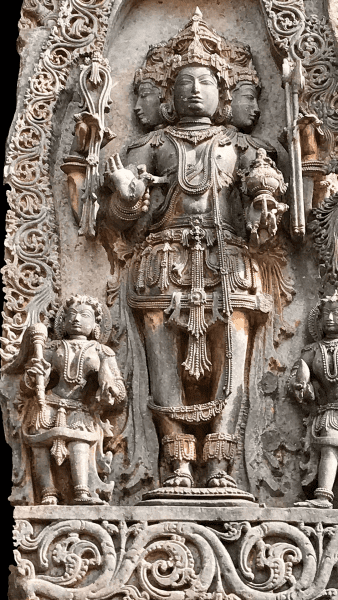
Joseph Campbell is not religious in the traditional sense. He doesn’t believe myth are literally true, but views them more like poetry, saying they use symbolic language to communicate deep truths to us, truths that are beyond what we are currently able to say using ‘rational’ language.
I think another quote from Carl Jung may be appropriate here: “Because there are innumerable things beyond the range of human understanding, we constantly use symbolic terms to represent concepts that we cannot define or fully comprehend. This is one reason why all religions employ symbolic language or images.”
We don’t really understand the universe, says Joseph Campbell, science just labels things. Like a scientist will look at an atom and give labels to the different parts of it, but they don’t really know what energy animates the atoms they are looking at.
I’m reminded of a quote from Albert Einstein, often seen as the smartest scientist ever, who said:
“We still do not know one thousandth of one percent of what nature has revealed to us.”
Albert Einstein
With that being said, let’s explore some key archetypes or symbols that occur in myths, and what they might signify:
- The Mother Goddess. 🌎 Also called the Great Mother, this is a key figure that occurs in many cultures, including Gaia in Ancient Greece, Isis in Ancient Egypt, Kali in Hindu mythology, and even the Virgin Mary in Christianity. The Mother Goddess is the giver of forms, she gives birth to and nourishes all, and her body often represents the world.
- The Father Quest. ⚔️ Culture is often represented by a father figure, and some cultures are guided by a creator god connected with qualities felt to be masculine like strength, authority, and even warfare. A common storyline in many myths is the “Father Quest,” such as in the Odyssey by Homer where the hero is told to “go find your father.” Joseph Campbell says this represents finding your character, who you really are.
A famous modern figure who talks about religion, psychology and culture is Jordan Peterson, a Canadian professor who has gained a following by taking a stand on the conservative side of social issues. But for decades, he was teaching classes related to Mythology at the University of Toronto. So, here are a couple additional points from Peterson’s books:
The Great Mother represents everything that is unknown to us, and the unknown is always both dangerous and promising. It’s the dark cave that may hold a dangerous animal or some hidden treasure. The Great Father is the known, representing social order, stability and tradition… and it is always both protective and constricting to us. Social norms, rules and taboos keep us safe, but they can also stop us from exploring new opportunities.
In Peterson’s teachings, the Hero is the one who courageously explores the unknown and transforms it into known, they turn chaos into order, and create a path that others can follow, a new pattern of being. Like the first caveman who figured out how to control fire for warmth and cooking, they transformed an element of the unknown into the known, and made the lives of all humans around them better through courageous action.
Read more in our summary of 12 Rules for Life by Jordan Peterson
And here are some more archetypes or symbolic themes:
- Angels and Demons. 🕊️ As a child, Joseph Campbell believed there was literally an angel on one shoulder and a devil on another, urging him towards good or bad. Now he can see that as a metaphor for our inner impulses. We are directed by “powers and principalities” which are always in conflict or at war with each other, in that hidden subjective dimension of life that we all experience directly.
- The Serpent. 🐍 In many cultures, the serpent represented life in its most elemental form, as eternal regeneration, both scary and beautiful. I’m reminded of a quote from Nietzsche, “The snake that cannot shed its skin must perish.” (Though in the Bible the snake is rather a symbol of deceit and evil.) A similar theme used in agricultural societies was the seed, which must die so that new life can be born of it, and perhaps that even extends to dying and resurrecting gods.
- Virgin Births. 👼 The most famous example is Jesus Christ being conceived by the Holy Spirit in the Virgin Mary, but there is also Buddha who is often depicted as entering his mother Queen Maya’s womb during a dream as a white elephant, and there are various ancient myths that also contain miraculous births. Joseph Campbell says the virgin birth represents the birth of spiritual man out of the animal man, such as Jesus arriving as the human incarnation of compassion.
We can understand myths better when we view them as speaking to us through symbolic language and images, not as a primitive form of science. Symbols such as: The Mother Goddess is the source of life, The Great Father is our culture, the serpent is life’s eternal regeneration, and virgin births symbolize the emergence of higher human qualities like compassion.
6. Individualism and Love: A new, personal ideal of love in Medieval Europe caused many greater social changes
Let’s finish up this book summary with a final theme that appear later in the book, related to the rise of individualistic love.
The Western ideal of romantic love is a person-to-person connection, with timeless devotion inspired by the unique of the beloved person. This actually began in 12th century France with a group called the troubadours, musical poets. In medieval times, these poets began singing of their love and longing towards a noblewoman, and all the deeds of courage and chivalry they would do to prove their love to that woman.
Before the troubadours, love was seen more as a way to fulfill pragmatic needs. In medieval Europe, the royalty and nobility would often arrange marriages to cement political power. And people in general saw marriage as a way to ensure social stability and rear children, not simply done for personal feelings of love.
So this change really marked a larger shift, from the collective authority of society to the ultimate validity of personal experience. Joseph Campbell believed this was a major influence on later social changes like:
- The Legends of King Arthur. On the surface, these were incredibly popular stories about honourable knights meeting around a Round Table going on quests for the Holy Grail. But on a deeper level, they spread the idea in society that we ought to pursue our personal higher ideals, choosing our path in life individually.
- The Protestant Reformation. Martin Luther, the German monk who founded Protestantism, ultimately wanted a more direct and personal relationship to Christ, one that was not mediated by the Roman Catholic Church’s authority as a social institution. And so Campbell even calls Luther “a troubadour of Christ.”
This is really a fascinating idea, that a major cause of individualism, which is so dominant in Western cultures today, was heavily influenced by some romantic poets living in France hundreds of years ago! And they were probably the source of all romantic comedy movies too!
Let’s also connect this to the ideas of Sigmund Freud, perhaps the most influential psychologist that ever lived. In his book Civilization and its Discontents, Freud explains his belief that modern man’s unhappiness is often caused by society, because society makes us repress our impulses rather than acting them out, particularly sexual impulses.
Here’s where it gets really interesting… Sigmund Freud said that society redirects (or ‘sublimates’) our sexual energy towards activities that are beneficial for society as a whole, such as raising a family, building community relationships, or even creative occupations. Perhaps this is why almost all past societies developed sexual taboos around things like adultery, premarital sex, etc…
The modern ideal of love, showing deep personal connection, actually began with 12th century French poets called troubadours. They emphasized the validity of personal experience over following social norms, a theme later echoed in the King Arthur legends and the Protestant Reformation.
- Recognize the Hero’s Journey Pattern. Remember at the beginning when I said this book could change how you see everything from now on? Well, don’t be surprised if you notice the pattern of the Hero’s Journey the next time you’re enjoying a great movie or book. Moreover, consider how we can live more like the archetypal hero in our own lives, courageously moving TOWARDS our biggest problems, just like Harry Potter or Frodo.
- Use the Hero’s Journey in Persuasion or Marketing. People often don’t enjoy trying to be persuaded with arguments, which often feel dry and boring. But we all love a good story. That’s probably why Jesus usually taught in parables. A story involves a hero, that begins as an ordinary person, encounters a challenge, has a transformation, then returns with something valuable. Effective sales pitches and advertisements often use this framework.
- Identify Your Bliss. What genuinely excites you or makes you feel alive? This could be a hobby, a certain type of work, or even a cause you believe in. Reflect on what makes you happiest and most fulfilled, and try to incorporate more of that into your life or work.
- Create a Sacred Space for Yourself. This is a physical location or a specific time when you can read inspirational books, simply sit quietly, reflect on your dreams, or do practices like mindfulness, meditation, journaling, or prayer. Many self-help authors like Robin Sharma recommend waking up earlier, so we can do this first thing in the morning.
- Create Rituals at Home and Work. Use the concept of rituals to create strong bonds within your family and better lead in your organization. These could be simple daily rituals, like eating breakfast together with no phones allowed, or a morning team meeting.
- Develop a Respect for Resources. Apply the principles behind hunting rituals to your own consumption habits. Show respect and gratitude for the resources you use, whether that’s the food you eat or the income you receive. A core tenet of many religions is praying before a meal, and even if you’re non-religious that could be a good practice to adopt.


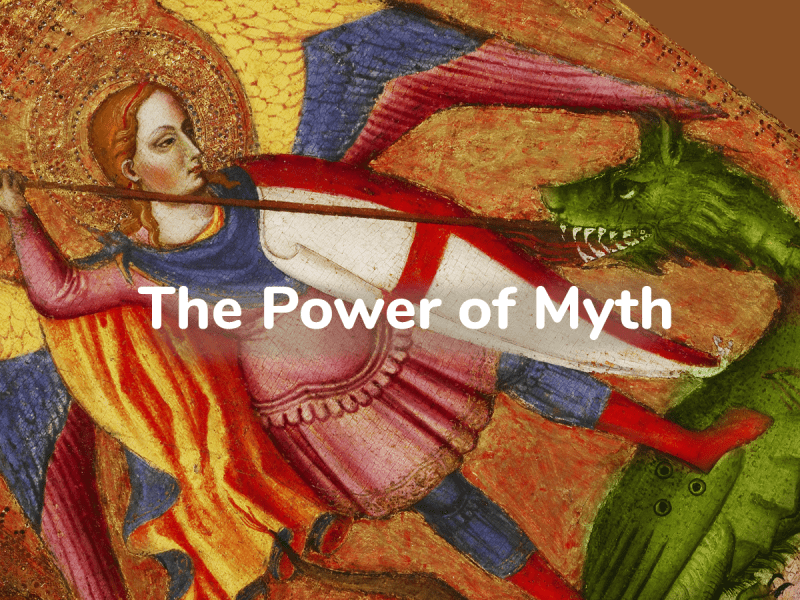
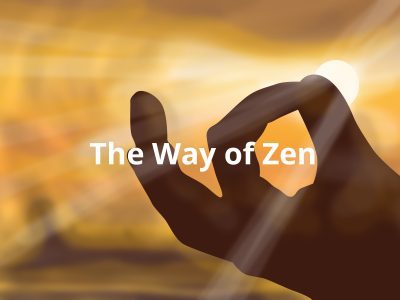
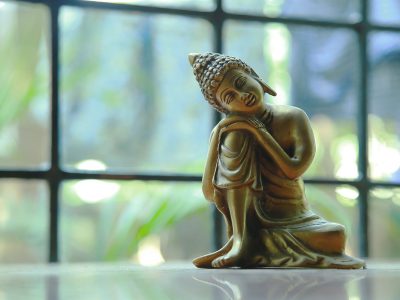
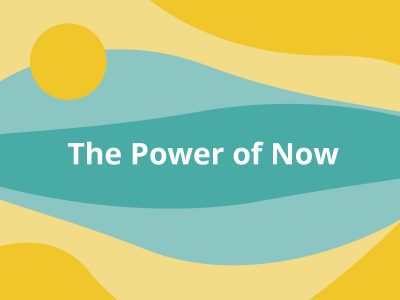
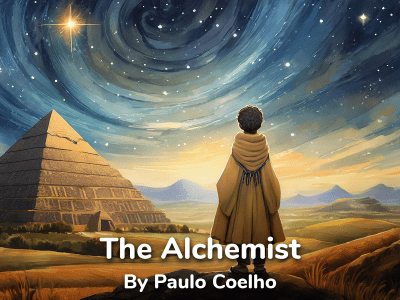
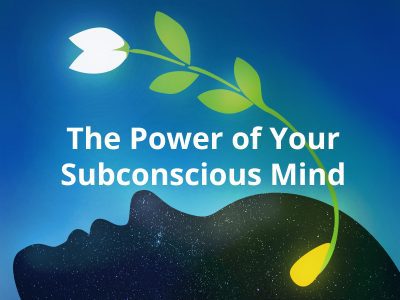
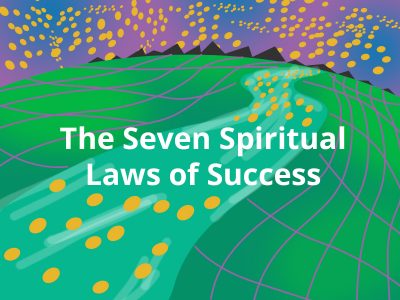


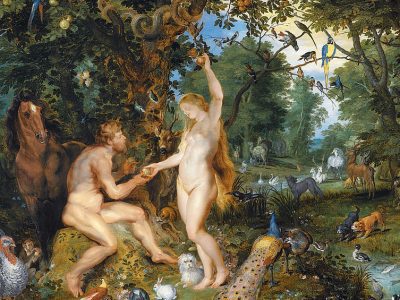






Community Notes